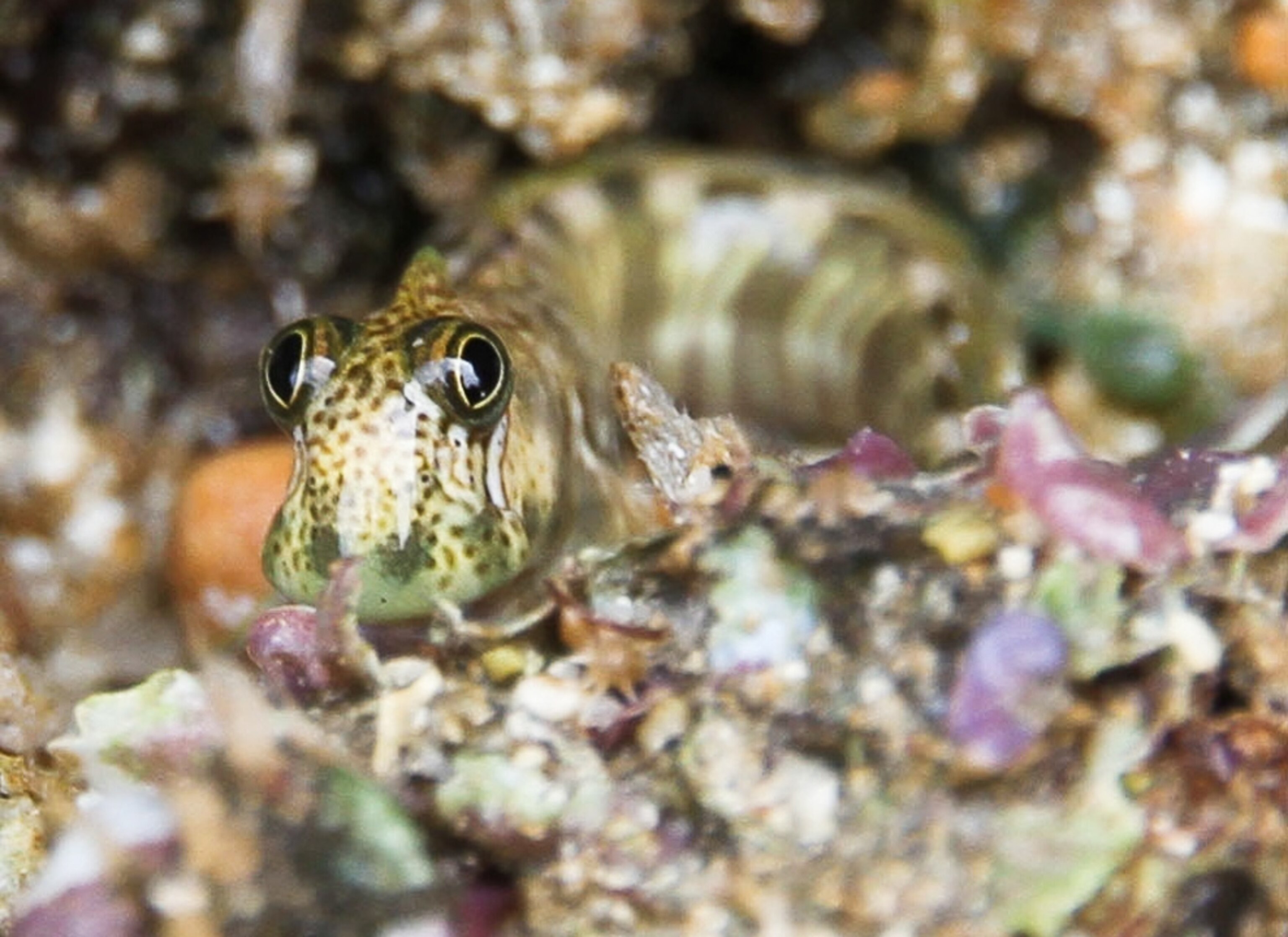
How "Walking" Fish Made the Leap From Ocean to Land
There's a reason why this fish loves dry land instead of water.
The Pacific leaping blenny (Alticus arnoldorum) is a fish out of water. The legless land fish makes its home on the intertidal rocks on the island of Guam (map), and new research shows how this strange fish was able to make the leap from stealthy swimmer to landlubber.
(Walking Began Underwater, Strolling-Fish Discovery Suggests)
The two- to three-inch (four- to eight-centimeter) blenny does everything on land, from finding its steady diet of algae and detritus to mating and nesting. Its love of dry land is perhaps best reflected in how it escapes from threats like predators or researchers trying to trap it. (Related: “Pictures: ‘Walking’ Fish a Model of Evolution in Action.”)
“They actually don’t retreat into the water. Instead, they hop across the rocks and try to hide in rock holes and crevices. Their body shape has changed just enough to make them poor swimmers, so it’s better for them to try and find a hiding place on land,” said Terry Ord, an ecologist at the University of New South Wales in Australia and co-author of the new study in Animal Behaviour.
One of the keys to the blenny’s success on land is camouflage: The fish’s brown, mottled skin blends in with the intertidal rocks, allowing it to escape predators like birds and crabs.
(A fish that walks on the seafloor has gone extinct. Can its cousins be saved?)
Animals can use a variety of techniques to keep from being eaten, but one of the most common is being invisible. In recent experiments, Ord and UNSW colleague Courtney Morgans compared the color of five different populations of blennies around Guam to the rocks on which they lived. In each case, the two colors were nearly identical, which was a strong hint that the blennies were blending in to the surrounding environment to hide from predators.
To test this hypothesis, Ord and Morgans constructed life-size clay models of blennies. They placed a bunch of these models either on the rocks (where they would blend in almost perfectly) or on a sandy beach (where their coloring would make them stand out). (See “Two New ‘Walking’ Batfish Species Found.”)
After several days, the researchers collected the models and recorded how often the blennies had been attacked by lizards, birds, and crabs by counting the bite marks and other wounds in the clay. The more obvious models on the sand had significantly more bites than the models on the rocks.
Evolutionary Snapshot
Animals first left the oceans for dry land nearly 400 million years ago, at the end of the Devonian period. Understanding how animals made this move will provide tremendous insights into the evolution of life on land, Ord said.
But since only fossils remain of these pioneering life-forms, scientists can’t watch these animals in action. But they can study another species making a similar transition, the blennies, to learn how animals made the switch to land. (See pictures: “Nine Fish With ‘Hands’ Found to Be New Species.”)
“The blennies were probably reasonably well camouflaged when they first emerged from the water—at least enough to let them survive long enough to reproduce and adapt,” Ord said.
Besides camouflage, the blenny’s fish ancestor had to make some other major adaptations, like figuring out how to move on rocks instead of just swimming, and how to breathe air instead of getting oxygen from the water. (Related: “Fish Lives in Logs, Breathing Air, for Months at a Time.”)
Although Ord still isn’t sure exactly when the blennies began their move from sea to land, he knows it was later than the Devonian.
“These blennies provide an evolutionary snapshot of the colonization of land,” Ord said.





